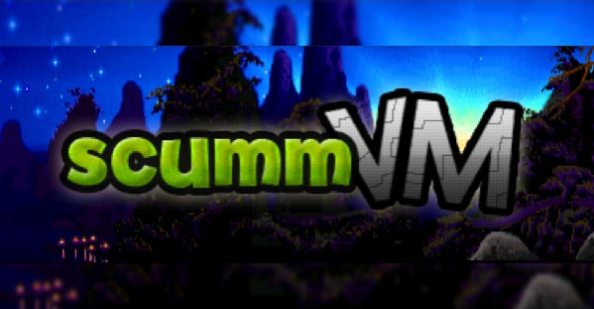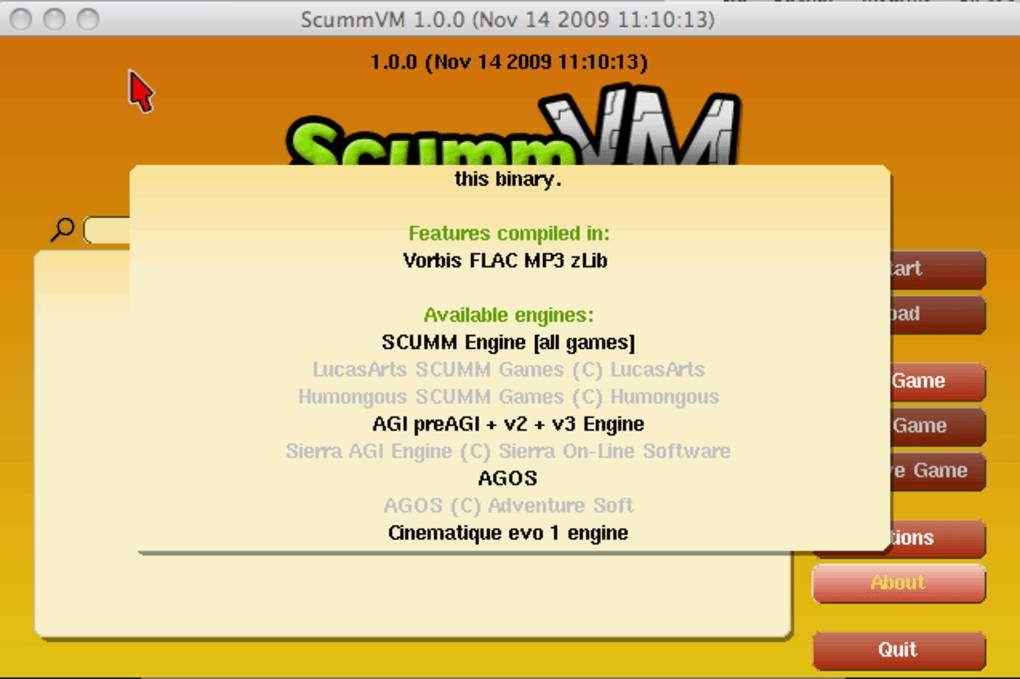

- #SCUMM EMULATOR FOR MAC INSTALL#
- #SCUMM EMULATOR FOR MAC FULL#
- #SCUMM EMULATOR FOR MAC PORTABLE#
- #SCUMM EMULATOR FOR MAC SOFTWARE#
All WAV files must be 22050KHz, mono or lower.
#SCUMM EMULATOR FOR MAC FULL#
DOS version offers full SB-compatibility sound, VESA graphics, and mouse. Version 6.x (1997-2015) is for WinXP/Vista/Win7/Win8+ and is written in Visual Basic 2010. Version 4.64 (1997-2000) is for DOS/Win95/Win98/WinME and is written in 16-bit MS QuickBasic / MASM and has source code. Works for all DOS/WIN emulators as well as DOS PC Games by creating BAT files to start each PC game.
#SCUMM EMULATOR FOR MAC SOFTWARE#
Needs Tcl/Tk, which is a free, albeit big (20MB) software compiler that you will need to assemble the program for your operating system.
#SCUMM EMULATOR FOR MAC PORTABLE#
DOSBoxGui Description: A portable DOSBox frontend.You can create different profiles for your games, etc. DBoxFE Description: DBoxFE creates and manages configuration files for DOSBox.Platforms: Windows, Linux, OS X Website: Includes a fancy "floppy flow" user interface. It tries to distinguish itself from alternatives by having "the right set of features", which means not too few, and not too many features. D-Box Description: An open source frontend for DOSBOX.You can also have a look at the Frontend Comparison page.ĭescription: An open source frontend for DOSBox, based largely upon the proven interface of D-Fend. The current most popular frontends are, Boxer for MacOS X, D-Fend Reloaded for Windows, and DBGL which runs on multiple platforms. Some of them also support other emulators like ScummVM, Windows games, and console emulators.
#SCUMM EMULATOR FOR MAC INSTALL#
“You know, sweetheart, if there's one thing I've learned, it's this: nobody knows what's gonna happen at the end of the line, so you might as well enjoy the trip.The following frontends will help you run, install and manage your DOS games. It’s been a fun ride as a separate project, but we think it will be just as fun going forward. For the Wintermute-fans, this also means that there will not be any need for splitting your gaming across ResidualVM and ScummVM, as there will be a single, 3D-supporting engine in ScummVM.įrom a technical perspective, the code base has already been merged, and in the days to come we’ll be merging our forums and look into consolidating things like bug trackers and Discord-servers etc. This means that you will eventually be able to run ScummVM with our theme, as well as run games like Grim Fandango straight from ScummVM. That’s right, from today, ResidualVM is no longer a separate project, but instead now fully a part of ScummVM. Keeping these code bases in sync has taken a fair bit of effort, an effort that we’ll no longer have to keep up, because today we’re announcing perhaps the biggest change in ResidualVM’s history, namely its merger into ScummVM.

We haven’t just shared suffixes, we’ve also shared a lot of code between the projects, to the point that apart from the specific game engines, it was mostly the graphics code that differentiated ResidualVM from ScummVM. After a few more years, partially due to the need for a domain-name, Residual changed its name closer to its sister-project, and became the ResidualVM we know and love today. It has been a long and interesting ride for these two sister-projects, where one has served the 2D point-and-click community, and the other has aimed at the residual games, namely the 2.5D and 3D games. A few years later, in 2003, Residual followed suit, on the 15th of August. Today is ScummVM’s birthday 19 years ago they had their very first release.


 0 kommentar(er)
0 kommentar(er)
